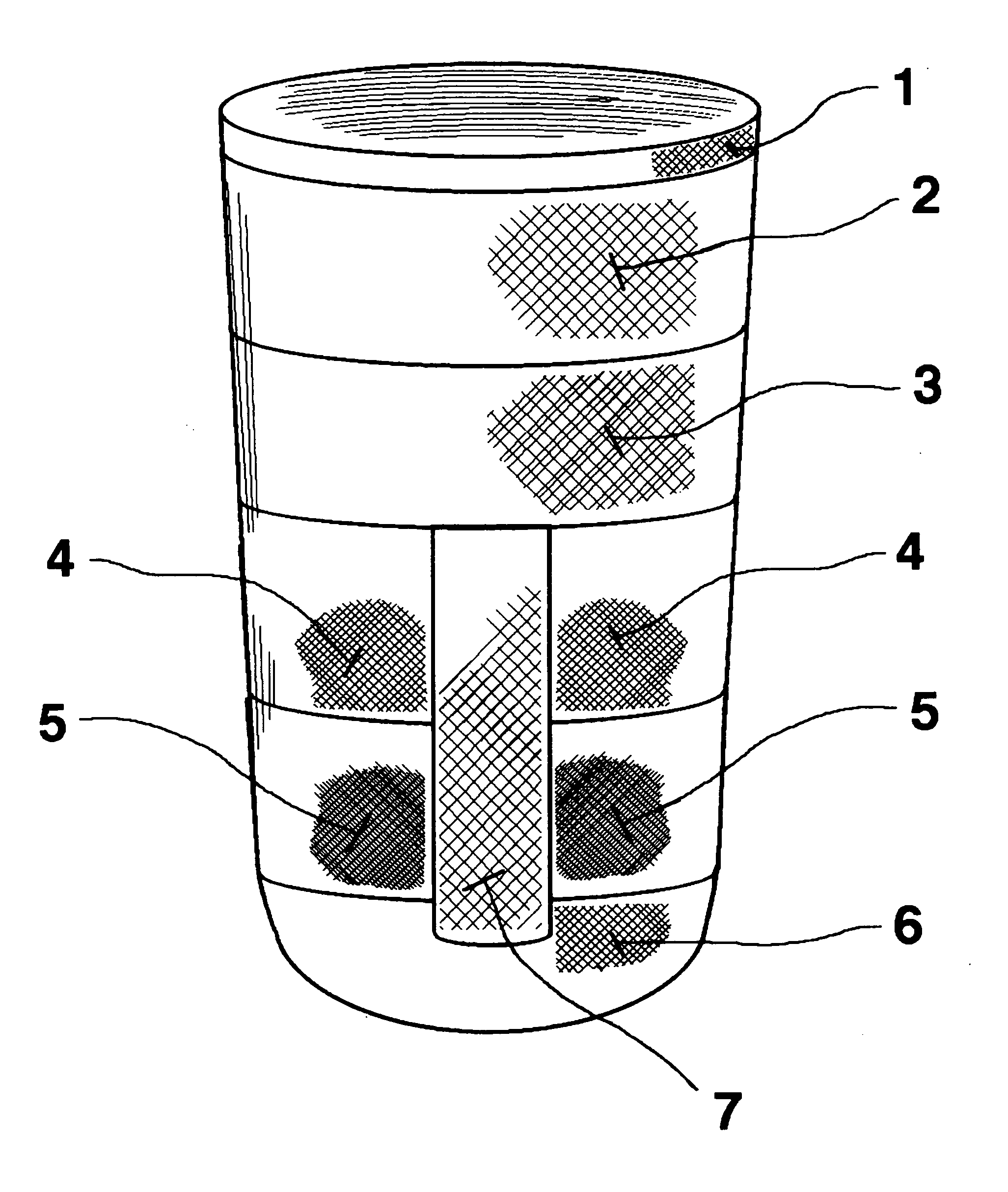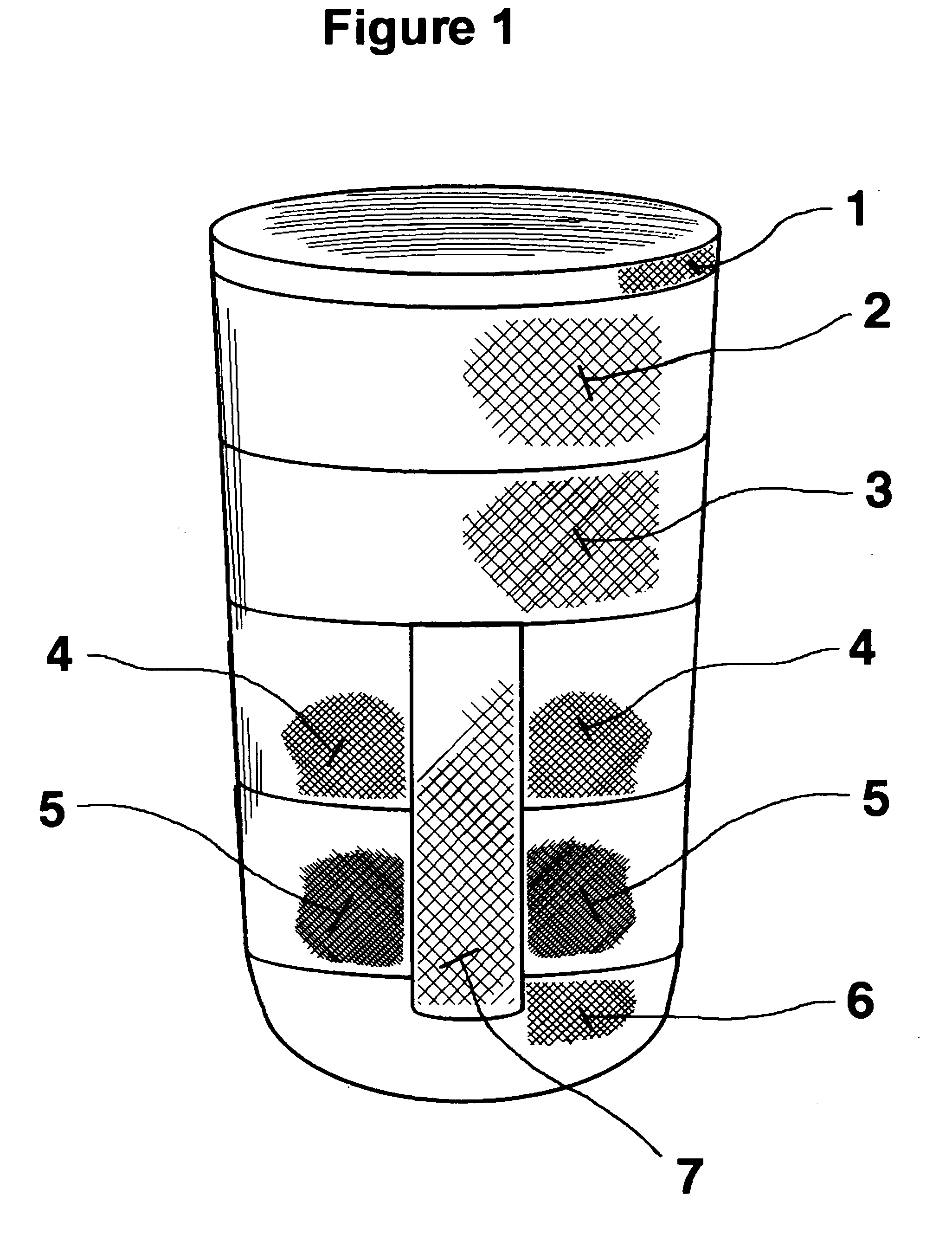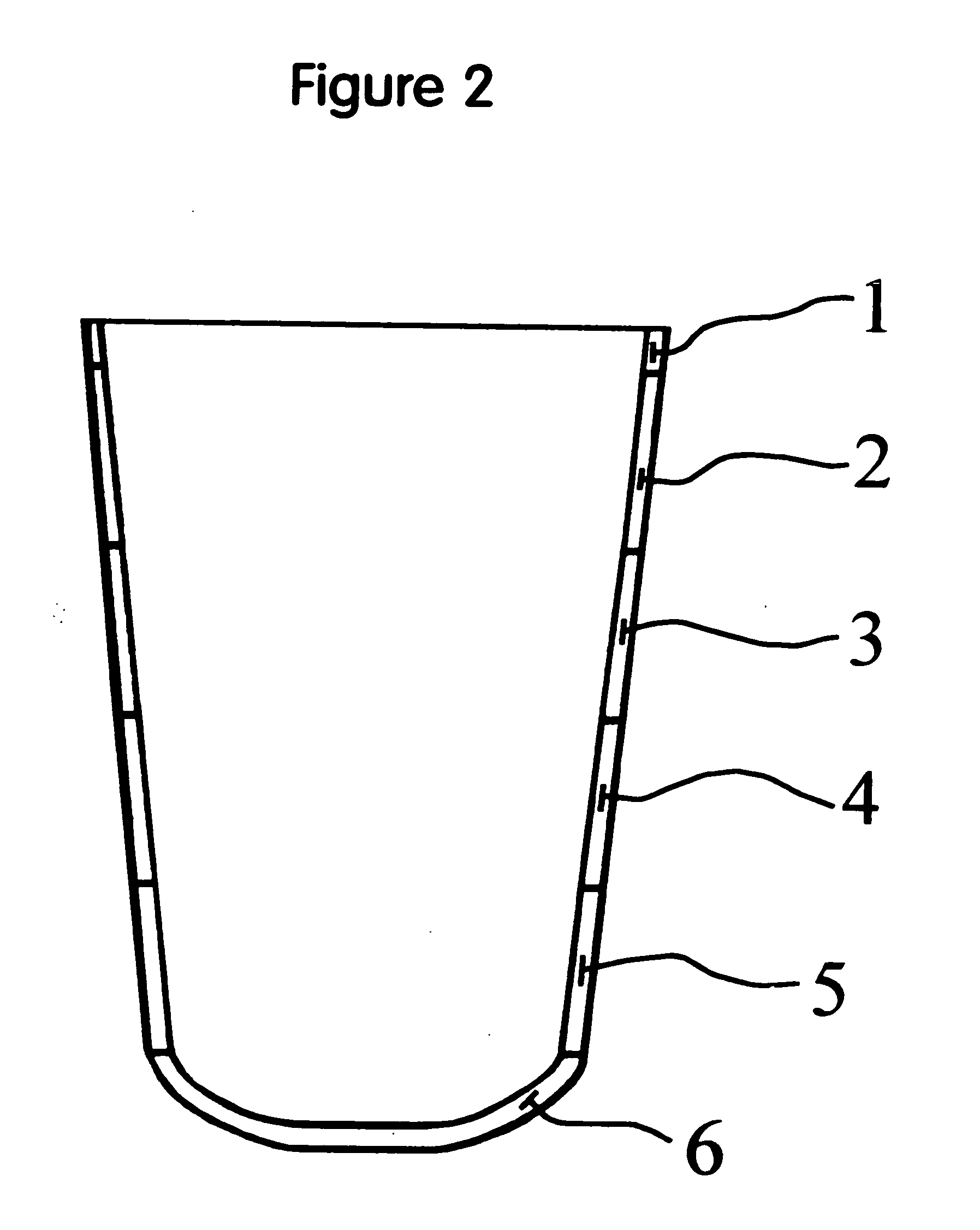Prosthetic sock providing graduated thickness and tibial crest load reduction for an amputee limb remnant
a technology of tibial crest load and prosthetic sock, which is applied in the field of prosthetic sock, can solve the problems of uneven shrinkage throughout the length of the residuum, inability to use stump socks of even thickness, and difficulty in selecting the appropriate number and thickness of stump socks, so as to achieve greater distal limb remnant volume reduction, greater proximal thickness, and greater distal thickness
- Summary
- Abstract
- Description
- Claims
- Application Information
AI Technical Summary
Benefits of technology
Problems solved by technology
Method used
Image
Examples
Embodiment Construction
[0019] The most preferred embodiment of the present stump / prosthetic sock is open on its proximal end 1 to allow the introduction of an amputee's limb remnant (not shown) and has a thicker knitted closed distal end 6 with a knitted loop construction having elasticised fibres allowing limb remnant shape accommodation without wrinkles and a soft cushion inner surface. Between proximal end 1 and distal end 6, the most preferred embodiment of the present stump / prosthetic sock invention has a tapering graded thickness reduction via bands 2-5 that provides increased loading to the amputee limb remnant soft tissues while reducing the loading over the amputee's tibial crest area which is more sensitive to pressure.
[0020]FIGS. 1 and 2 show the present invention sock having six circumferential bands of differing length and thickness dimension, identified by the numbers 1, 2, 3, 4, 5, and 6. While the length dimension of bands 1-6 shown is preferred, variations may occur in some applications,...
PUM
 Login to View More
Login to View More Abstract
Description
Claims
Application Information
 Login to View More
Login to View More - R&D
- Intellectual Property
- Life Sciences
- Materials
- Tech Scout
- Unparalleled Data Quality
- Higher Quality Content
- 60% Fewer Hallucinations
Browse by: Latest US Patents, China's latest patents, Technical Efficacy Thesaurus, Application Domain, Technology Topic, Popular Technical Reports.
© 2025 PatSnap. All rights reserved.Legal|Privacy policy|Modern Slavery Act Transparency Statement|Sitemap|About US| Contact US: help@patsnap.com



